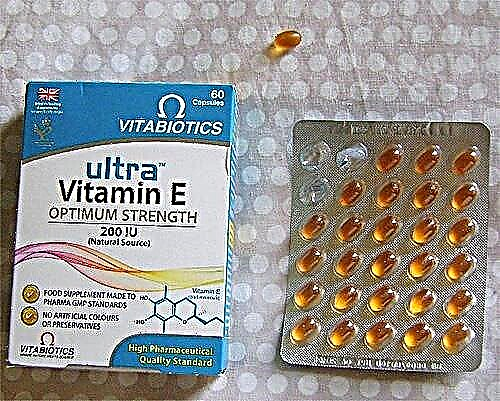
Mothers usually choose the method of changing newborns spontaneously. Some swaddle as shown in the courses or in the hospital, others - as it turns out, while others know several ways and choose between them based on the situation.
You may not know the features of wide or French swaddling, you may not be able to do all this with three diapers at the same time, but knowledge of the technique of performing a tight and free swaddling, of course, will be useful to every new mother. In this article, we will talk about how these two types of swaddling differ and how to do them yourself.


Differences
Free and tight swaddling are considered two sides of the same coin: both methods represent subspecies of classic swaddling, and therefore they are not difficult to learn and are available to any parent. Not so long ago, tight swaddling was considered almost the only possible for a newborn.
Soviet pediatricians recommended it in order for babies to straighten their legs, have a beautiful and healthy posture in the future, and also so that the child sleeps more calmly.

As time went on, the doctors came to the conclusion that the legs, crooked due to genetic characteristics, do not straighten, even if the child is tightly swaddled for the entire first year of life, the posture also depends little on the diaper. And then a wave of criticism hit the tight way. Psychologists began to argue that it suppresses the personality of the child, mothers were worried if it would disturb blood circulation. That's when they started talking about free swaddling.
In general, children are uncomfortable without a diaper, experts say. Mom's womb was cramped, and the baby got used to it. In the big world, where he came on his birthday, everything scares him. He does not know how to control the movements of his hands, and therefore he waves them himself and is himself afraid of this. To reduce stress, they swaddle to create the illusion of the presence of familiar uterine walls around the baby. Both methods of swaddling - free and tight - cope with this task.


The differences are in the tension of the diaper. The tight method does not allow the baby to raise his arms, pull his legs to the stomach. Free - all these actions are allowed, but the baby's waving hands are limited - the diaper does not.

Free way - advantages and disadvantages
Free swaddling gives the child the opportunity to take the position he wants. With regard to newborns, it is mainly about the physiological posture of the embryo. With her, the child presses his legs to his stomach and folds his arms over his chest. The baby, who is freely wrapped in a diaper, will be able to take just such a position, and also change it at any time if it is inconvenient.

Fumbling in a diaper, the child not only makes his muscles work, but also develops fine motor skills and touch. He touches himself with his fingers, the fabric from which the diaper is sewn, the undershirt. This is very important for the development of brain function in the newborn.
The skin, which is not pulled tight by the diaper, can "breathe", the air freely and freely penetrates under the fabric, and therefore the likelihood of prickly heat or diaper rash in the baby is significantly reduced.
The chest is not limited in the range of motion, the child can breathe freely. The natural posture of the embryo helps to relieve infant colic. These are the main advantages of the method. Now let's look at its disadvantages.
Loose swaddling is a rather flimsy design, and therefore your overly active child can regularly turn out of the diaper without much difficulty and wake up from fright, hitting himself in the face with his hand. If such a baby is growing in your family, it is better to choose a swaddling with handles for him, even if in an inappropriate way.

Free swaddling is more suitable for children who are calm, good about the fact that they are wrapped. A baby swaddling protestor and free swaddling are incompatible things.
Due to the fact that it is too easy to get rid of the diaper, the child may open up in the middle of the night and freeze, which he will again notify with a loud cry in the night. Parents, who, from the first days, orient their baby to a certain daily routine, which naturally includes a long night's sleep, in this state of affairs quickly abandon the free type of swaddling in favor of another, not necessarily tight. There are alternatives, and therefore it is worth considering other ways.
The tight way - pros and cons
Pediatricians argue about tight swaddling and so far cannot come to a common denominator on this issue. But most of them agree that a child wrapped tightly really calms down and falls asleep faster. Where the mother will rock the baby for an hour with open arms, the mother, who uses tight swaddling, will have time to redo a lot of household chores, while the baby peacefully sniffs in the diaper "column".

A child with tight swaddling cannot scratch himself, does not bother himself with the waves of his arms and legs. The situation is excluded when the child accidentally turned around and froze in the middle of the night. A child who has been swaddled in a classic tight manner not only falls asleep faster, but also sleeps longer: the phase of deep sleep, according to the observations of doctors and mothers, increases significantly. As a result, the baby gets better sleep, feels more cheerful and kinder during periods of wakefulness.
The disadvantages of tight swaddling, it should be noted, are significantly exaggerated by opponents of this method, but they still exist, and the main one is that it disrupts the development of the musculoskeletal system. This is not so, but in some cases this method is really not recommended, for example, with congenital weakness of the hip joint. If the doctor at the first examination detects signs of dysplasia of the pelvic joints, he will warn that it is impossible to swaddle the baby tightly.
Swaddling tightly is bad for the digestive system, some say. But again, there is only half of the truth - this method does not contribute to a faster discharge of excess intestinal gas with colic, because the baby cannot pull his legs to the tummy. If there is no colic, no swaddling method affects digestion.


Wrapping in a "column" limits the movement of the child, and this is true. Comprehension of the surrounding world through tactile contact with different surfaces slows down. Tight swaddling creates an increased threat of developing diaper rash due to overheating, and therefore this method is not recommended in the heat, as well as for children with fever.
The arguments about the suppression of the freedom-loving personality in the baby, about the poor development of the brain, about the increased risk of sudden infant death do not correspond to reality and are considered pseudoscientific.
It is noteworthy that people who swaddled themselves in a tight way in childhood talk about them. Be calm - the child will be all right with the brain, communication skills and thinking.

How to swaddle?
Swaddling a newborn is not as easy as it sounds. But it is not at all as difficult as some people think. Let's look at these two methods in terms of execution technique:
Tighter
Spread the diaper in a diamond shape, place the baby in the middle, so that the upper corner of the diamond is over his head. This corner should be tucked under the head. The shoulders of the crumbs should be at the level of the angle obtained from the folding. One hand of the baby is pressed to the body and wrapped in a diaper on this side, the edge is wound behind the back. The second handle is wrapped in the same way. The lower corner of the rhombus is put behind the right shoulder and the rest of the child is wrapped around the body.

Free
Spread the diaper in a rectangle and position the baby so that the top edge of the diaper is at neck level. Put one hand of the baby on his tummy, lightly support it with your hand and wrap the diaper lightly with the corner on the corresponding side. Do the same with the other pen.
Pull the upper edge of the diaper up so that the handles are rolled up, can move, but not removed. The corners lead behind the butt and easily wrap the lower body. Legs and arms should move, but not knock out of the diaper.

You can swaddle without handles. To do this, fold the arms over your chest and repeat the same procedure. A swaddled toddler will have fists on the chest and peek out of the diaper.
General recommendations
Whichever swaddling method you choose, pay attention to some nuances that will help protect your child from diaper rash and contact allergies when changing.
- Use diapers of the density required by the season and weather. Do not entangle the baby, all diapers should be made only from natural fabrics, have well-finished edges and not have seams in the middle.
- If a baby sleeps in a diaper, be sure to leave him “free” while awake.
- Be sure to wash the diapers and iron them. Drying the described diapers and their subsequent use without washing and ironing is not allowed.
- Make sure that the room is not hot: the optimal temperature for a baby being swaddled is 20-21 degrees Celsius in the room at any time of the year. This will help prevent overheating.
- Do not try to swaddle your baby at any cost. If the child resists swaddling, use ordinary baby clothes, as a last resort, get velcro diapers or special sleeping bags, in which the baby will not wave his hands, scare himself, and will not freeze at night in his sleep.
- Use only hypoallergenic baby detergents for washing diapers. If a newborn is in the house, the washed diapers must be additionally rinsed with boiled water (when boiling, chlorine comes out of the water).
For information on how to swaddle your baby correctly, see the next video.



